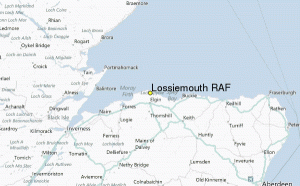2017-03-06 HDMS PETER WILLEMOES is now part of GEORGE H.W. BUSH strike group in the Mediterranean.
The video below (in Danish) shows the ship leaving Denmark and joining the Bush task force.
http://www.forsvaret.tv/#!/video/30602767
HDMS Peter Willemoes is a Royal Danish warship built for 21st century combat, equipped with sophisticated detection systems and powerful weapons.
In the video below, this Smithsonian Channel discusses the capabilities of this Danish warship.
http://raiseaglass.smithsonianchannel.com/videos/hdms-peter-willemoes/51682/playlist/1440734
 MEDITERRANEAN SEA (Feb. 18, 2017) The fast combat support ship USNS Supply (T-AOE 6) resupplies the Danish navy frigate HDMS Peter Willemoes (F 362) and the U.S. Navy aircraft carrier USS George H.W. Bush (CVN 77) during a replenishment-at-sea in the Mediterranean Sea. The George H.W. Bush Carrier Strike Group is conducting naval operations in the U.S. 6th Fleet area of operations in support of U.S. national security interests. (U.S. Navy photo by Mass Communication Specialist 3rd Class Michael B. Zingaro/Released)
MEDITERRANEAN SEA (Feb. 18, 2017) The fast combat support ship USNS Supply (T-AOE 6) resupplies the Danish navy frigate HDMS Peter Willemoes (F 362) and the U.S. Navy aircraft carrier USS George H.W. Bush (CVN 77) during a replenishment-at-sea in the Mediterranean Sea. The George H.W. Bush Carrier Strike Group is conducting naval operations in the U.S. 6th Fleet area of operations in support of U.S. national security interests. (U.S. Navy photo by Mass Communication Specialist 3rd Class Michael B. Zingaro/Released)
As the US Navy looks for a frigate beyond LCS, it clearly could look closely at this ship in terms of its capabilities and its value proposition.
In November 2016, the ship visited Baltimore and provided a close up for the US Navy and visitors to the ship.
Danish government and industry representatives are hosting a maritime and naval event aboard a Danish Navy frigate that is visiting Baltimore, USA, on November 17.
During its two-day visit to Baltimore, HDMS Peter Willemoes will host an event headed by Troels Lund Poulsen, Danish minister for business and growth, Danish ambassador to the United States, Lars Gert Lose, and Rear Admiral, Frank Trojahn, Chief of Naval Staff.
According to Danish defense company Terma, U.S. Admiral John Richardson, Chief of Naval Operations and Mac Thornberry, chairman of the House Armed Services Committee are expected to visit the event.
“Terma highly welcomes this excellent opportunity to demonstrate key technologies and products including our competences within command & control, surveillance and sensors, and naval self-protection technologies,” Thomas Leistiko, vice president, sales, command, control & sensor systems, said.
“We look forward to demonstrating our solutions in their natural environment on board the ship,”Leistiko added.
HDMS Peter Willemoes is the second of three Iver Huitfeldt-class air defense frigates which are considered to be the most powerful ships in the Royal Danish Navy. The 138-meter ships were built at the Odensee Steel Shipyard, part of Maersk Group, at a cost of US$325M per ship.
The frigates’ armament consists of several different missiles, anti-submarine torpedoes and machine guns.
In 2015, we took a close look at the Danish frigate alternative to LCS based on a visit to the class of warships represented by the new Danish frigate.
The Littoral Combat Ship is being built and deployed.
But it is neither a Frigate nor a Fast Patrol Boat, but really a hybrid that falls between the two.
A concern raised by the Military Sealift Command has been the support concept as well, whereby distance support – namely absence of robust organic support – requires proximity to ports or to MSC ships.
Leaving aside the question of self-defense capabilities, there has been concern as well with building a unique class of mission modules for a unique class of ships. Not only is this challenging, but also clearly with no global market in sight, costs are not to be amortized by global sales.
This is the exact opposite of the modern frigate, for which there are several robust designs in operation with a wide range of suppliers of various systems for the frigates. Rather than having mission modules, today’s frigates have capabilities built in for a variety of combat operations.
They do not have to be refitted for panoply of missions – they have that capability built in because of their larger size.
One clear example of leveraging the frigate to operate in a variety of missions and able to do so organically is the new Danish Iver Huitfelt class of frigates.
Both the Dutch and Danish frigates participated in Bold Alligator 2014, and the Dutch frigate operated as the command ship.
They worked in both ASW and AAW missions in the Exercise, an Exercise, which the lead planner for the exercise called “more a mission rehearsal than an exercise.”
While visiting Copenhagen for the Airpower conference, I had a chance to sit down with Hans Tino Hansen, founder and CEO of Risk Intelligence based in Denmark and Ed Timperlake, Editor of Second Line of Defense Forum, to talk about the Danish Frigate and how to think about that Frigate in relationship to the LCS.
Question: What is the origin of the new Iver Huitfeldt class frigates[1]?
HTH: The ship represents the transition from the Cold War Danish Navy to a post-Cold War navy. Earlier, the Danish navy had small and fast ships along with submarines to operate in the Baltic. After the end of the Cold War, thinking moved to having larger ships able of more a wider-range of operations.
In the Gulf War, we could only send a corvette, which had to be accompanied by a supply ship to get there and to operate. It simply did not have the sustainability built in to do longer range operations.
The last series of smaller vessels, the Flyvefisken-class of multi-purpose ships was built on the StanFlex concept where different modules were designed for different tasks and then put on the ships for the particular mission.
The first larger ships was the Absalon-class that can serve as a command vessel, or using its flex deck as a mine-laying ship with the appropriate module or can be customized as a hospital ship or simply operate as a transport ship with ISO standard containers and can carry helos and fast intervention boats[2].
The new frigate class was based on the same hull as Absalon and designed to provide for a larger ship for multi-mission and to leverage the StanFlex experience as well. The idea was to develop a sound frigate, which could evolve over time.
Ed Timperlake: We have referred to this as pre-planned product improvement. But what you’re also telling me is when you do a modular concept you are doing not with regard to the platform itself, but you can have preplanned product improvement for the modular system?
HTH: That is a good way of putting it.
A good example of the thinking behind the frigate was the desire to put the versatile Mark-41 Vertical Launch System on the frigate.
Not only can the frigate provide the command and control for a variety of missiles, but also it can put in this launch tube anything, which is developed for the community of users of that launch tube.
This means that the ship can become a key node in a future missile defense system for the region or beyond for that matter.
We can buy missiles not even yet developed which use this launch tube, and we can evolve the C2 to use these missiles in a broader engagement as well.
Question: Clearly cost was of concern, and you leveraged your indigenous shipbuilding capability.
Could you describe the approach?
HTH: The ships have been built on a civilian wharf and with civilian technology. It was built to NATO standards but in a civilian yard.
And in building the ship, we leveraged the global market, which enables frigates.
For example, the Thales radar systems were chosen and we will have the opportunity to upgrade with other Thales radar users, the enhanced capability to track missiles including ballistic missiles.
Question: So the ship could become either a sensor or a shooter within a broader missile defense regime?
HTH: It could but most likely it will emphasize its sensor role with the shooters coming from airborne or land based systems.
Ed Timperlake: When the concept of the Revolution in Military Affairs was first introduced the two core dynamics were information, and precision weapons with remote sensors.
What is often forgotten is the combination of long range precision-guided weapons WITH remote sensors.
This means that with a state of the art sensor package aboard a ship, it can provide an important contribution to a wider allied force,
HTH: It can. The Danish Air Force has no missile defense capabilities anymore.
This now falls to the frigates, and their role can become significant in a wider context.
Two frigates can more or less cover Danish airspace or we could place the Danish Frigate into the Baltic Sea and provide area coverage for the Baltics.
Question: Crewing is crucial for smaller ships.
The Danish navy has a small crew but with very diverse skill sets on the ship.
Could you describe the approach?
HTH: With the Danish Navy, unlike the US Navy, we require our crews to have a broader skill set for each sailor.
On the Danish ships you have several tasks for a particular officer, which means that the crews are much leaner.
You have just over 100 persons operating the new frigates.
Question: Let us turn to the question of the LCS compared to the Danish Frigate and missions we can envisage.
How do you view the two?
HTH: In Denmark, we have four ocean patrol frigates of about 112 meters, which carry helicopters and weapons and operate in the Arctic mission area.
They have been used as well in other missions, such as anti-piracy in Somalia. They are very good at what they do.
But I do not see the LCS given the sea states they could operate in being able to have this sort of flexibility.
And we have built the larger frigates to operate at sea organically for four weeks and a range of 9000 nautical miles. I do not see them doing that either.
They really fall between the classes of ships we use, and the various sea states in which we have to operate.
I can see perhaps their value in UN missions or very low conflict spectrum settings, but we simply do not have enough ships to build a ship for the lower end of the warfighting spectrum.
Ed Timperlake: The question of support is crucial as well.
The ship simply is not designed for autonomous operations, which means you either have to be part of a task force and then the question is what you contribute to that task force, or be close to ports, and there are many parts of the world where you simply do not want to be dependent upon entering a foreign port for support.
HTH: Those have to be concerns.
And if you bring a replenishment ship along you increase the vulnerability of the whole operation and then you need to protect the replenishment ship as well.
And with regard to ports, you would want to operate them in friendly waters with friendly ports nearby, which defeats the point of having a warship.
The LCS seems more like the corvettes, which the British used, in the last war to provide convoy support. They had limited weapons, primarily for convoy defense and could not hunt submarines.
Question: Clearly another key advantage of the Danish Frigates and the Absalon for that matter is its ability to support very large helos in addition to smaller ones. This is clearly important as rotorcraft technology evolves over time as well.
What can the two ships support?
HTH: The standard frigate helicopter is the Westland Lynx that will soon be replaced by the Seahawk.
The largest helicopter the Danish Airforce operates currently is Merlin[3], which is a large helicopter. The frigate can support one and hanger it and the Absalon two.
Large helicopters are an important part of providing for protection and we can clearly operate those types of helicopters on the two vessel classes.
Ed Timperlake: Historically, the Danish Navy was a very large sea-going navy. Now it is reaching back to some of those roots prior to its Baltic focus in the Cold War.
HTH: You can say that actually it was an anomaly that we only protected the Baltic, our Baltic approaches and our local area.
Those 50 years or 60 years was actually an exception if you look over the last 300 years.
[1] The Iver Huitfeldt class is a three-ship class of frigates that entered service with the Royal Danish Navy in 2012 and 2013
[2] http://en.wikipedia.org/wiki/Absalon-class_support_ship
http://www.militaryfactory.com/ships/detail.asp?ship_id=HDMS-Absalon-L16
[3] http://danishairshow.dk/en/aircrafts/aircraft/danske-flyvevaben1
The photos were taken when visiting the HDMS Niels Juel when it was in Baltimore Harbor after participating in the Bold Alligator 2014 exercise.
Credit Photos: Second Line of Defense
- The first three photos show the ship pier side in Baltimore, Maryland. The next three show the guns aboard the ship, with the fourth and fifth photos showing the system below deck and the sixth the gun above deck.
- The seventh and eighth photos show the Sea Sparrow launch tubes and launch area. The ninth shows the Harpoon launcher. The tenth shows one of the two sets of two torpedo launch tubes.
- The 11th and 12th photos show the SMART-L and APAR radar systems respectively.
- The 13th photo is a shot of the bridge with 14-16 providing information sheets on the ship’s engines.
- The 17th through 19th photos are of the missions control areas, where the ASW, anti-air and other missions are conducted. The 20th photo shows the engine control room.
- The final photo shows the flight deck where the new Danish Seahawks will operate from; the flight deck can take up to a 20 ton flight asset.
And for the visit aboard the HDMS Niels Juel see the following:
http://sldinfo.wpstage.net/visiting-the-hdms-niels-juel-a-very-flexible-and-capable-frigate/
And for an interview with the CO of HDMS Niels Juel see the following:
http://sldinfo.wpstage.net/visiting-the-hdms-niels-juel-an-interview-with-commander-lars-holbaek/




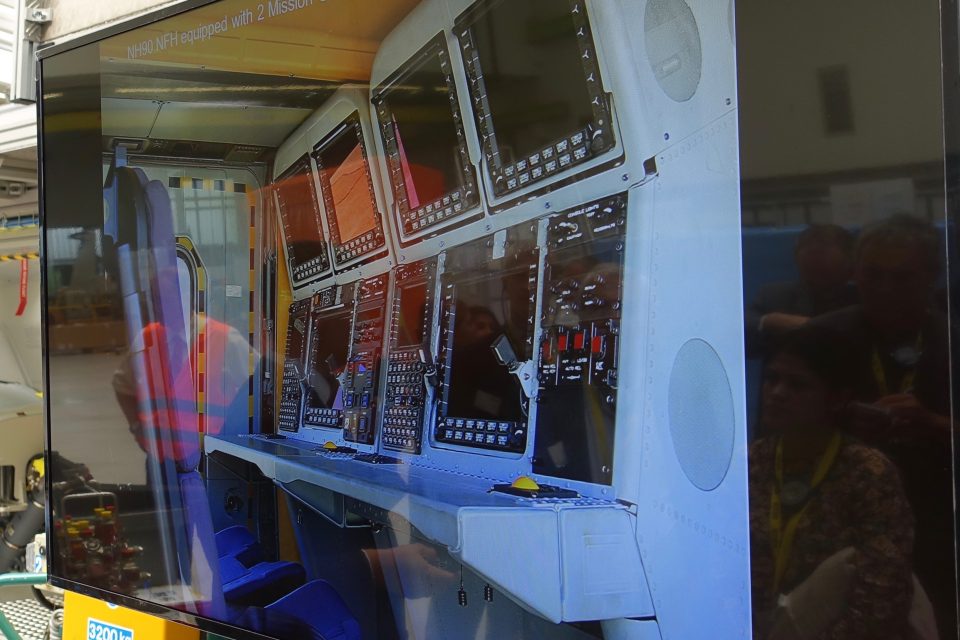
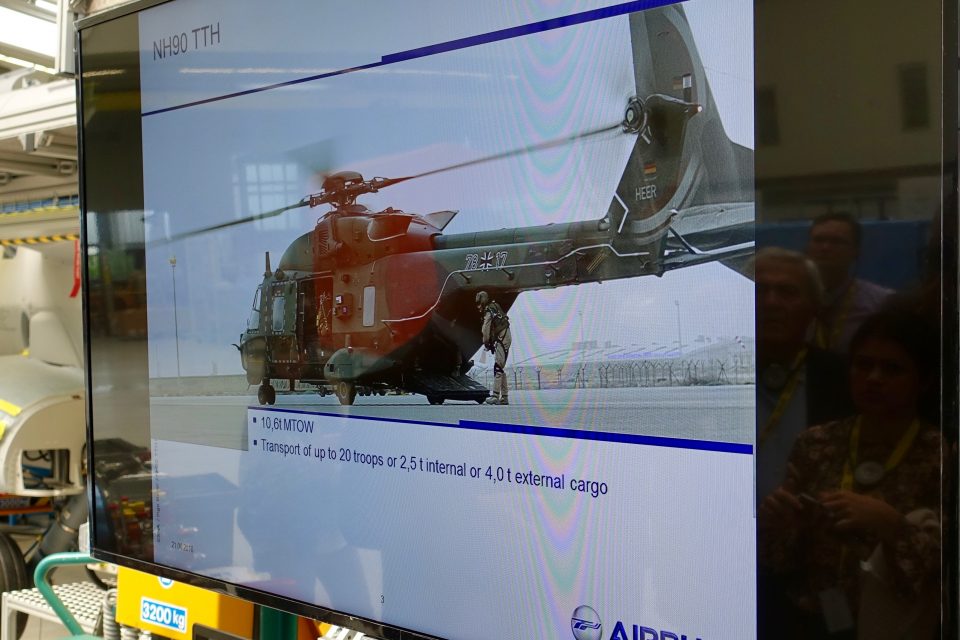
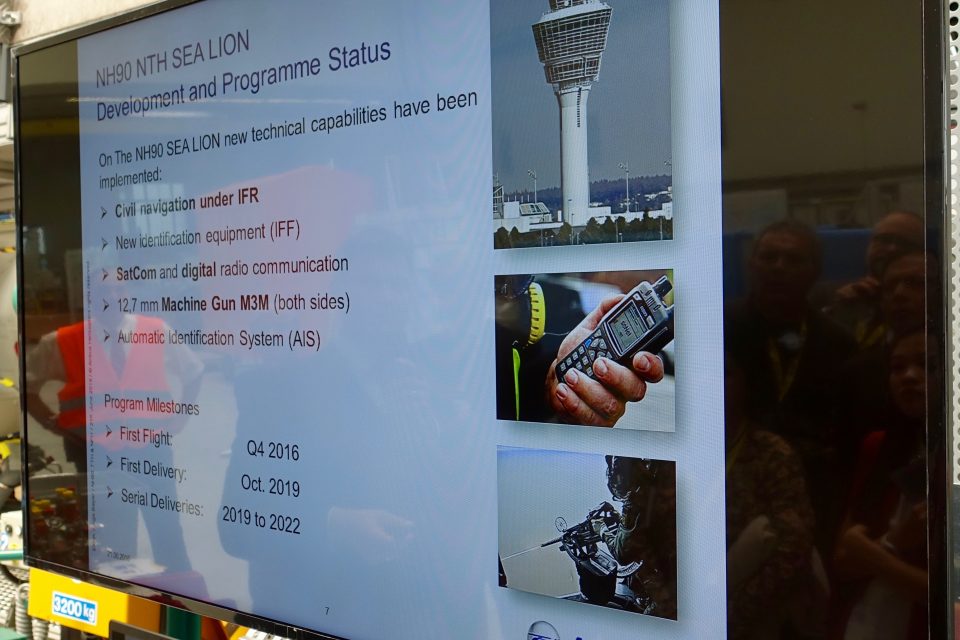
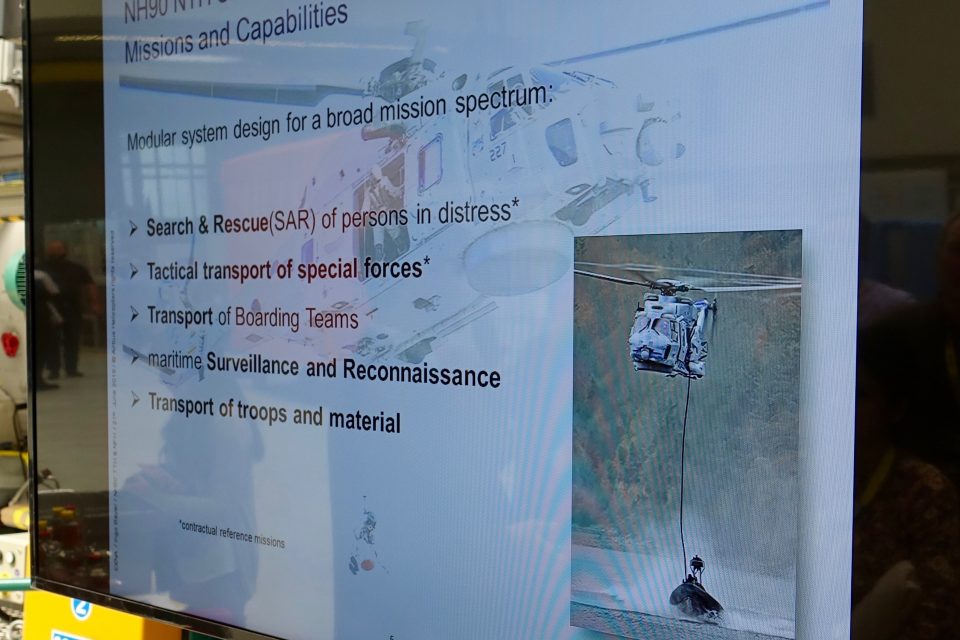
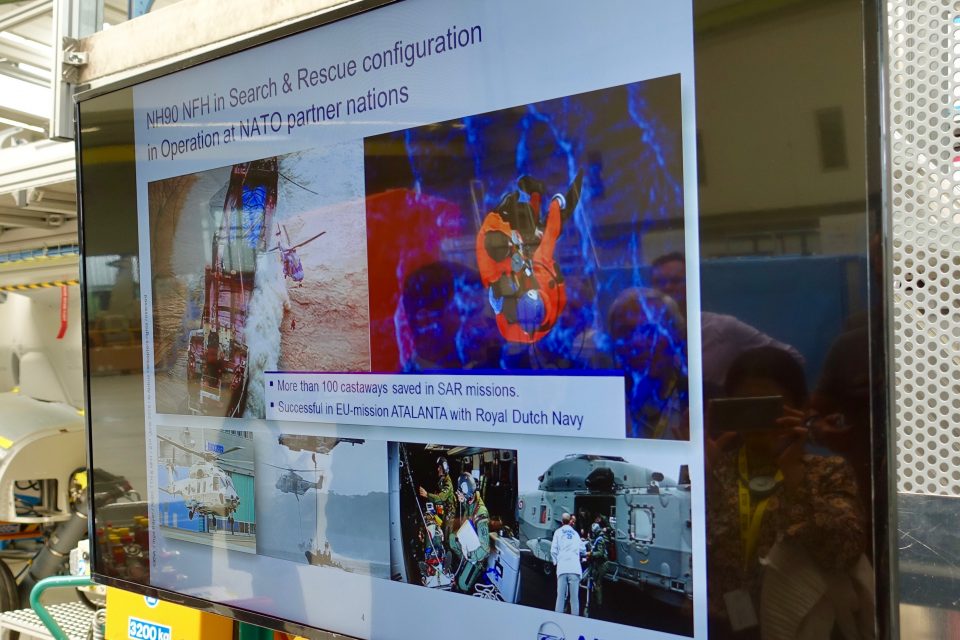
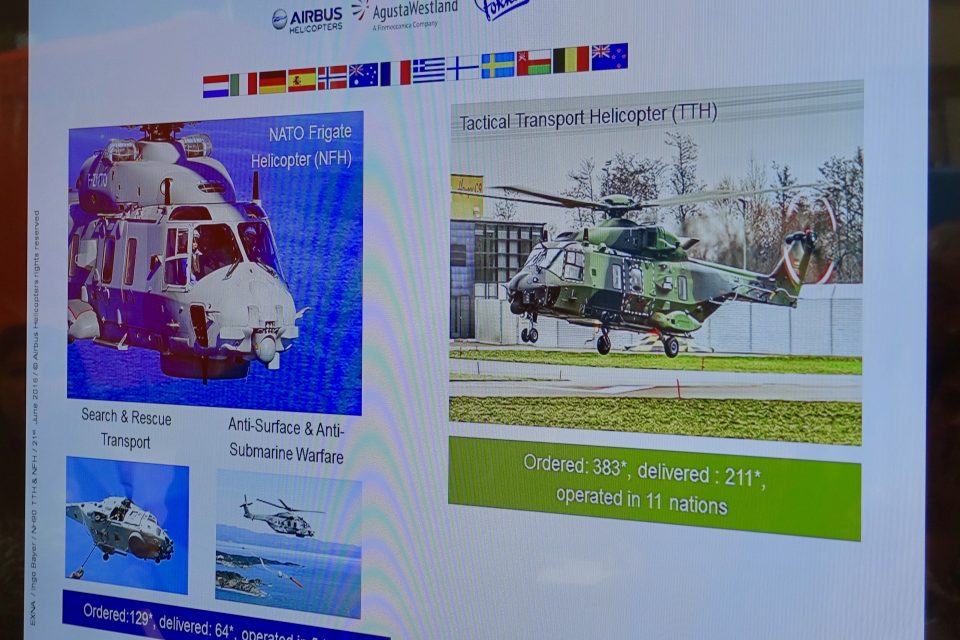
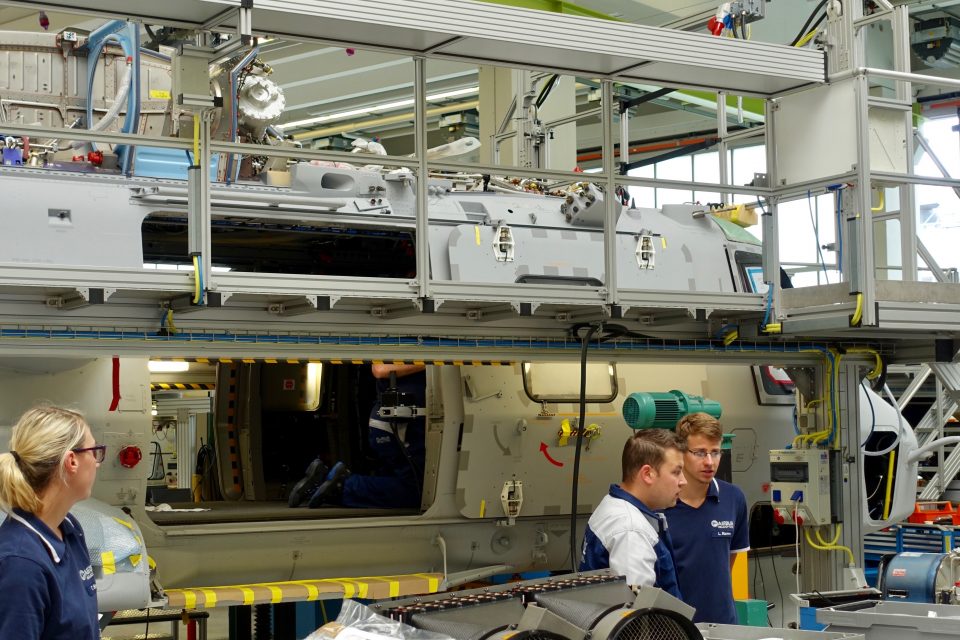
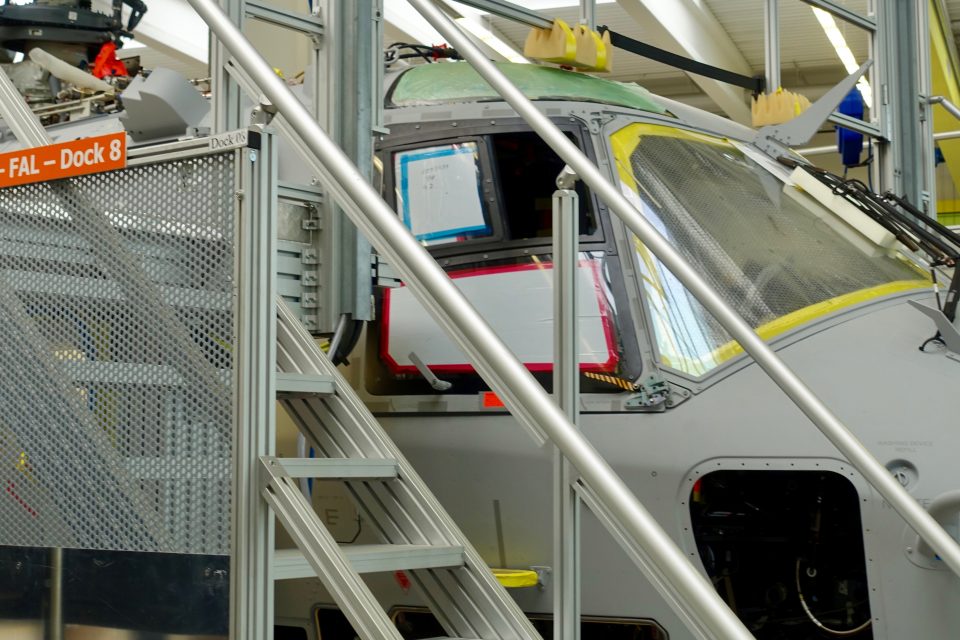
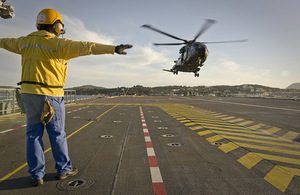
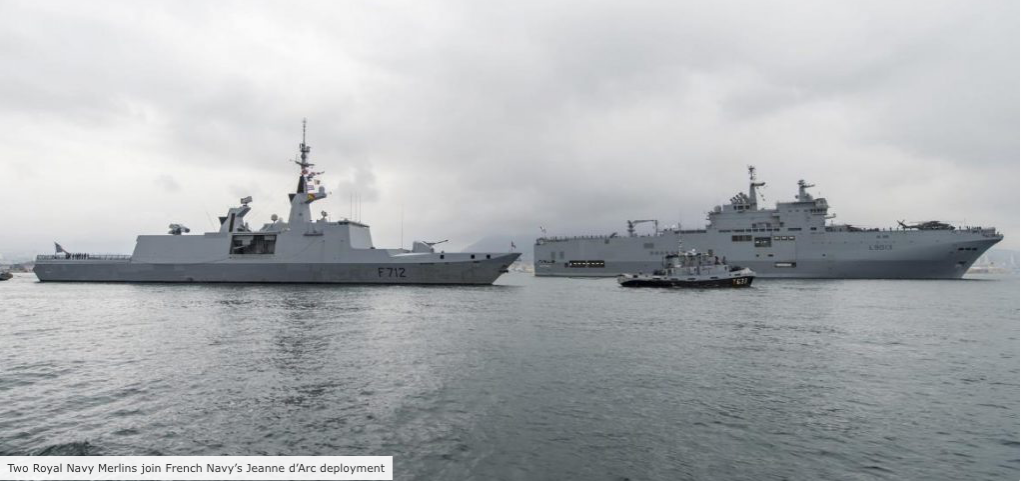
 MEDITERRANEAN SEA (Feb. 18, 2017) The fast combat support ship USNS Supply (T-AOE 6) resupplies the Danish navy frigate HDMS Peter Willemoes (F 362) and the U.S. Navy aircraft carrier USS George H.W. Bush (CVN 77) during a replenishment-at-sea in the Mediterranean Sea. The George H.W. Bush Carrier Strike Group is conducting naval operations in the U.S. 6th Fleet area of operations in support of U.S. national security interests. (U.S. Navy photo by Mass Communication Specialist 3rd Class Michael B. Zingaro/Released)
MEDITERRANEAN SEA (Feb. 18, 2017) The fast combat support ship USNS Supply (T-AOE 6) resupplies the Danish navy frigate HDMS Peter Willemoes (F 362) and the U.S. Navy aircraft carrier USS George H.W. Bush (CVN 77) during a replenishment-at-sea in the Mediterranean Sea. The George H.W. Bush Carrier Strike Group is conducting naval operations in the U.S. 6th Fleet area of operations in support of U.S. national security interests. (U.S. Navy photo by Mass Communication Specialist 3rd Class Michael B. Zingaro/Released)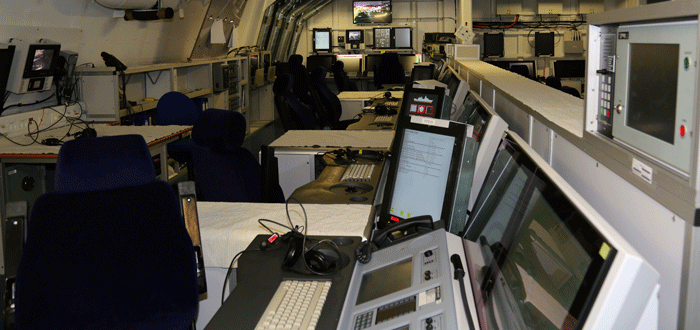
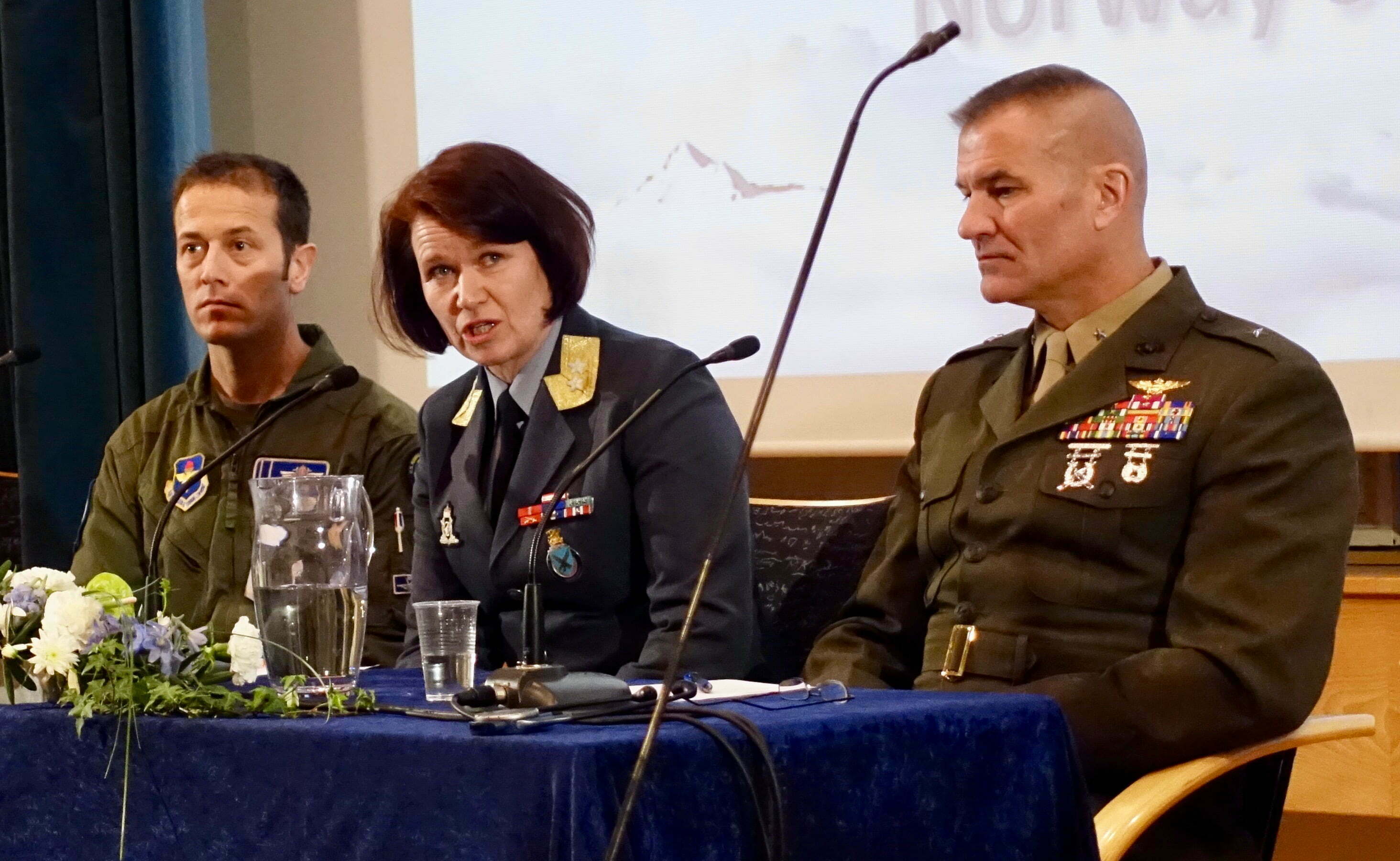
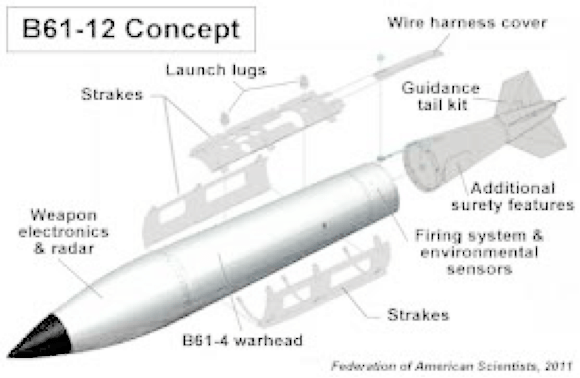
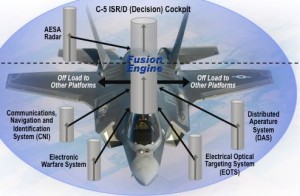

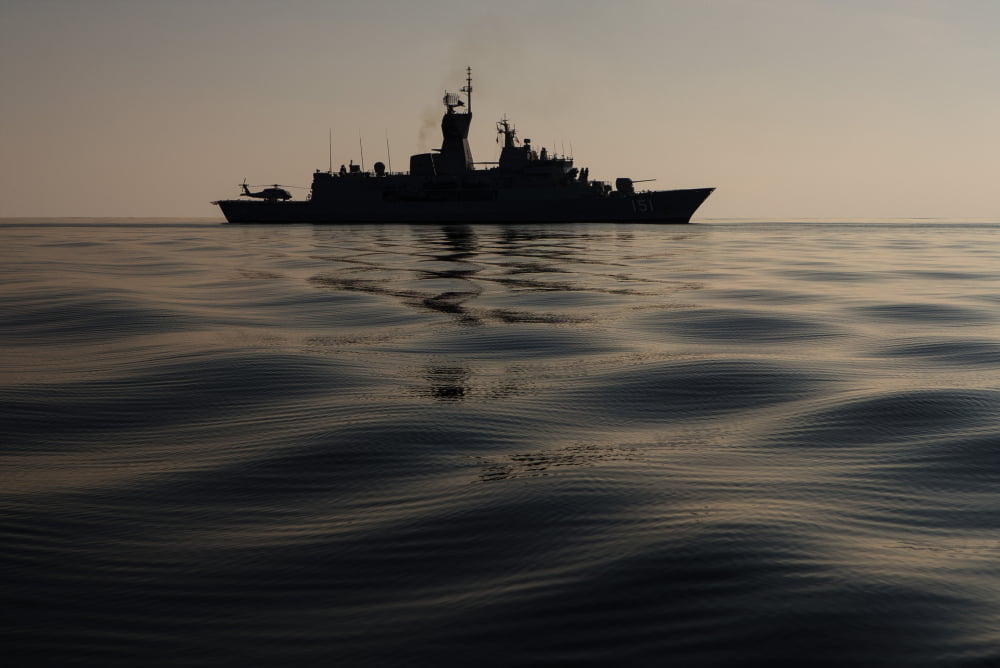
 HMAS Arunta on patrol in the Middle East region. Credit: Australian Ministry of Defence
HMAS Arunta on patrol in the Middle East region. Credit: Australian Ministry of Defence